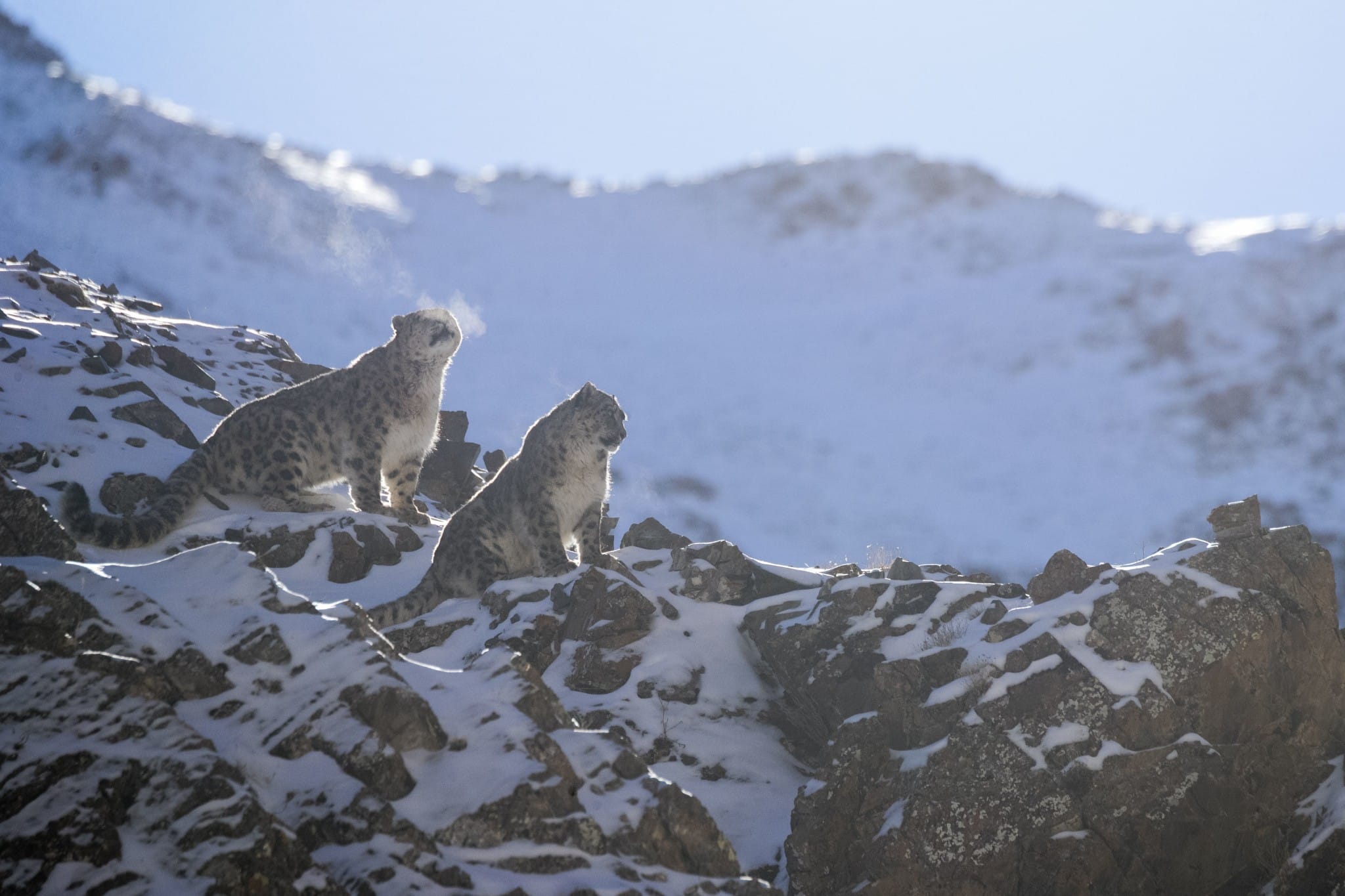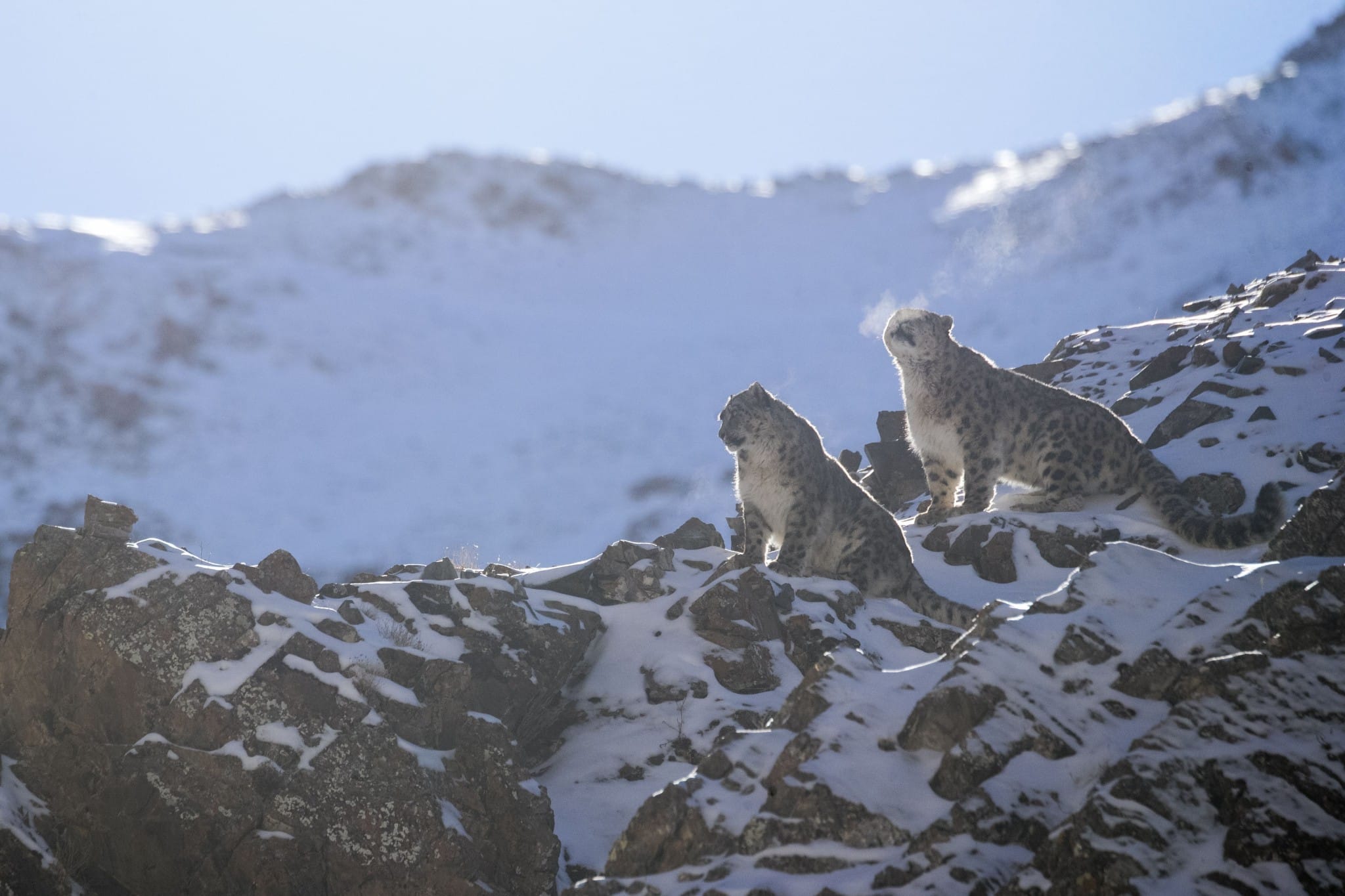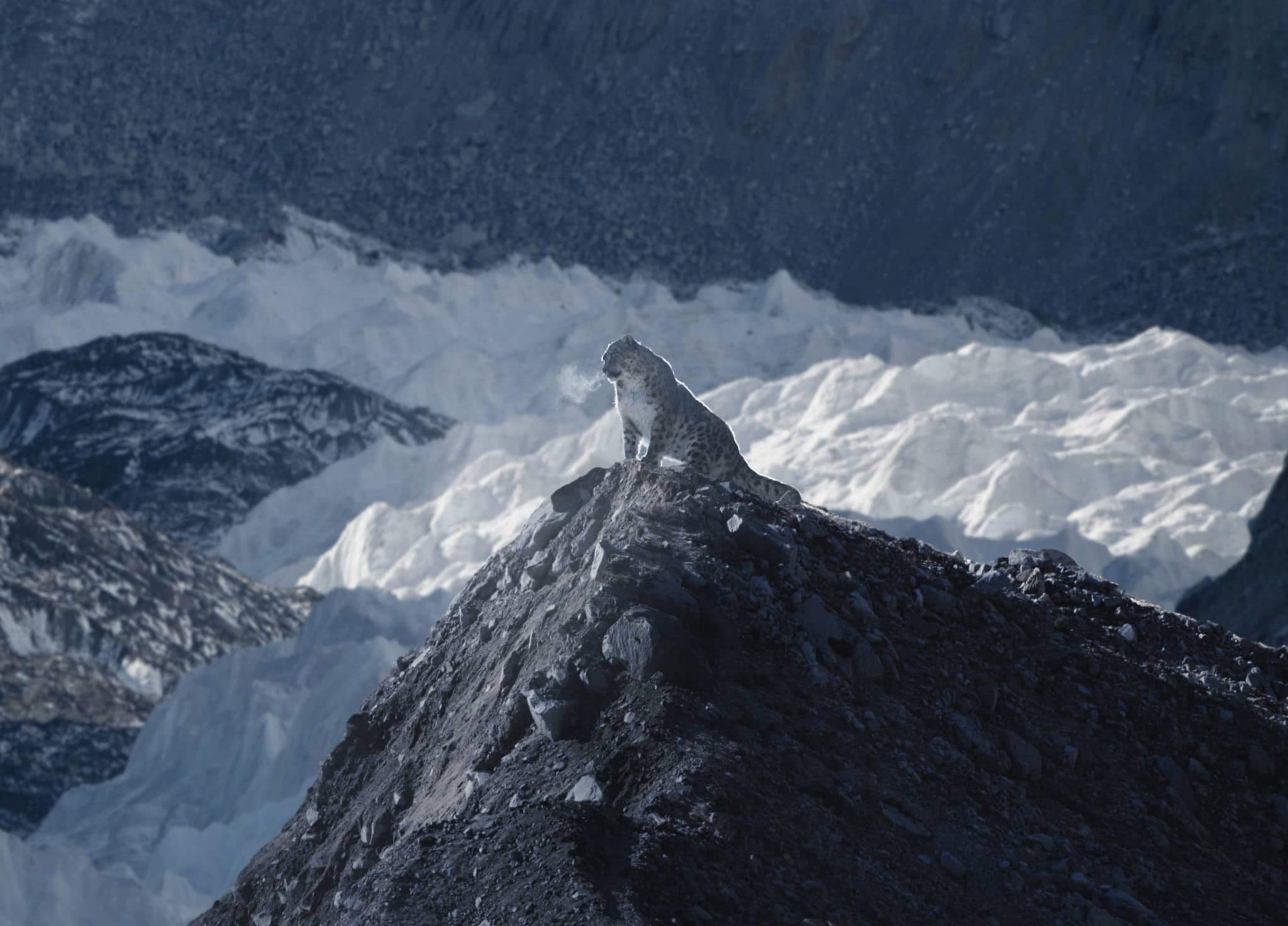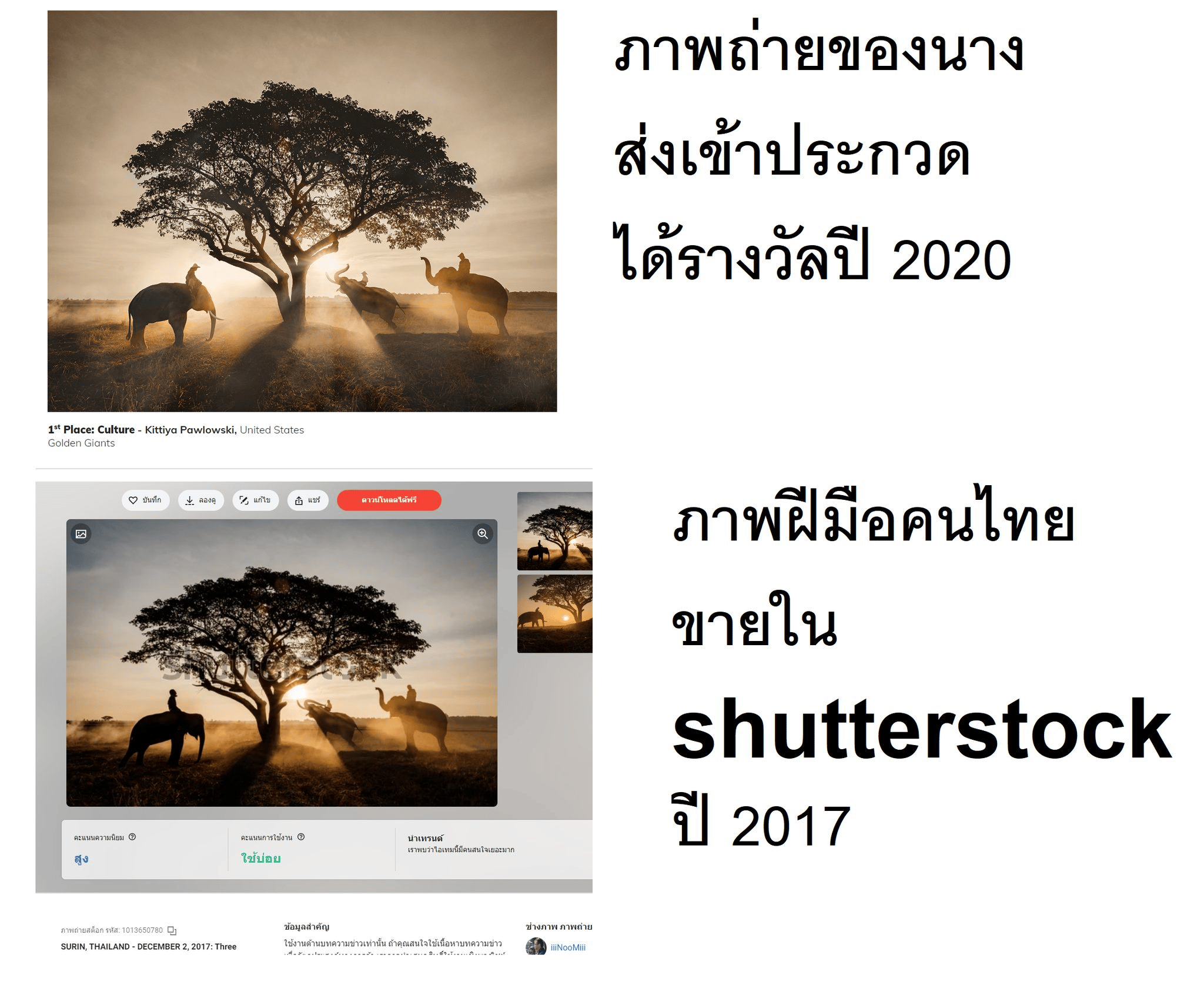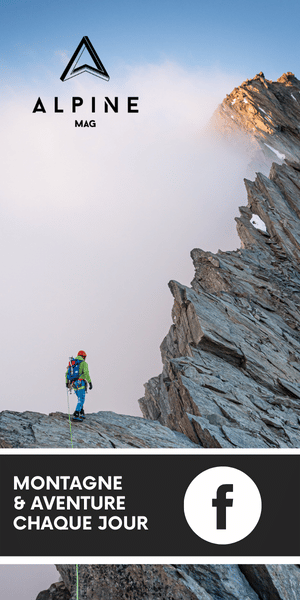The source of the snow leopard was the only link missing from our demonstration that Kittiya Pawlowski’s photographs were fake. We have now found one of the leopards the “visual artist” used. It’s from a picture taken by wildlife photographer Vincent Cordier in Mongolia, which Pawlowski cropped, turned and then inserted into her photomontages. To make matters worse, Pawlowski failed to ask either Cordier or his agency for permission to use the photograph, so what started as just another unacknowledged photomontage has become a case of photographic fraud.
since our article showing that Pawlowski’s images were actually collages of fragments from several photographs, the self-styled “visual artist” has defended herself via her website, claiming that she herself took the photos used to make the photomontages.
However, the world of photography was so dismayed by these fakes that many people began looking for the leopard itself — the missing link in this long chain of deception. There was no longer any doubt that Pawlowski could not have photographed the leopards so high (and on glaciers), especially not in the very busy Khumbu Valley, on the trail to Everest basecamp. So, where could these four images of snow leopards have come from?
Pawlowski clipped the leopard from its background,
then created a mirror image
One of our faithful readers, the photographer Eric Delaperrière, eventually found the original image of one of the four leopards Pawlowski used to make her photos. It’s a picture of a leopard taken by French wildlife photographer Sylvain Cordier in Mongolia’s Altai Mountains, far from the peaks of the Himalaya.
Pawlowski clipped the leopard from its background, then created a mirror image so it was facing the desired direction. A procedure that also prevents the photograph being recognized by search-engine searches for inverted images (uploading an image, rather than keywords, to find the original image or other similar images).
This time, there was no need for a detailed analysis of the photo. The two leopards coincide perfectly. It’s obviously the leopard Pawlowski used.
Sylvain Cordier’s photo turned round (with the photographer’s permission) for comparison with Pawlowski’s montage
I’m 99.99% sure
it’s mine
Sylvain Cordier
Contacted by telephone, Sylvain Cordier expressed his amazement at a deception that took in the entire world. “It was a global event! With her 800-mm and wide-angle photos, I immediately realized that something wasn’t quite right. But I didn’t look much further for the leopard. And there’s always been fakes. Even BBC Wildlife has been taken in by fake photos on several occasions.
She has played about a bit with the spots. She’s taken the underside of my leopard’s belly and put it on the leopard on the left…. In any case, seeing my photo next to hers, especially when I turn it, I’m 99.99% sure it’s mine.”
When we telephoned Cordier’s photo agency, Hemis, they confirmed that Pawlowski had not requested permission to use Cordier’s photo for this type of visual creation. The agency is now considering whether to take the issue further.
Aside
Moreover, our research showed that this isn’t the first time Pawlowski has passed off someone else’s work as her own. She won the top prize in the “Culture” category of the 2020 Chromatic Awards for an image taken by another photographer in 2017 and posted on Shutterstock Thailand. Again, Pawlowski provides an incorrect location for this photo of a very famous Thai tree, which grows in Surin Province, not Chiang Mai. QED.
Pawlowski’s 2020 competition-winning photo (top) and the Shutterstock photo taken by another photographer in 2017. Screenshots by BearLy Warun Siriprachai
A symbol
This story would have been just one more example of the huge problem of stolen images had the deception not hit the headlines around the world and generated income for the offender. Even worse, Pawlowski is using it to raise money for her “next expedition to Antarctica.” A
nd there’s also the duped buyers of her photomontages to consider. For these reasons, it is important to bring this deception into the light.
Mountain and wildlife photography deserve better. And, fortunately, there’s no lack of (talented) photographers.
Editors’ note
Our investigation, published in French and English, has been taken up the world’s media and social networks. Numerous media outlets that published Pawlowski’s fake photographs have issued public apologies and praised Alpine Mag for the quality of its work. For this, we express our thanks.
Kittiya Pawlowski has done everything she can to deny the facts, going as far as to ask Google to stop listing Alpine Mag in the results of searches concerning the snow leopards.
We count on our readers, who believe in the importance of quality reporting and of truthful images, to pass on the message.
Alpine Mag is an independent magazine supported by its subscribers. Every article shared, every like on Facebook and Instagram and, of course, every subscription to our magazine is more important than ever.
Thank you for your support and your numerous messages of encouragement.



